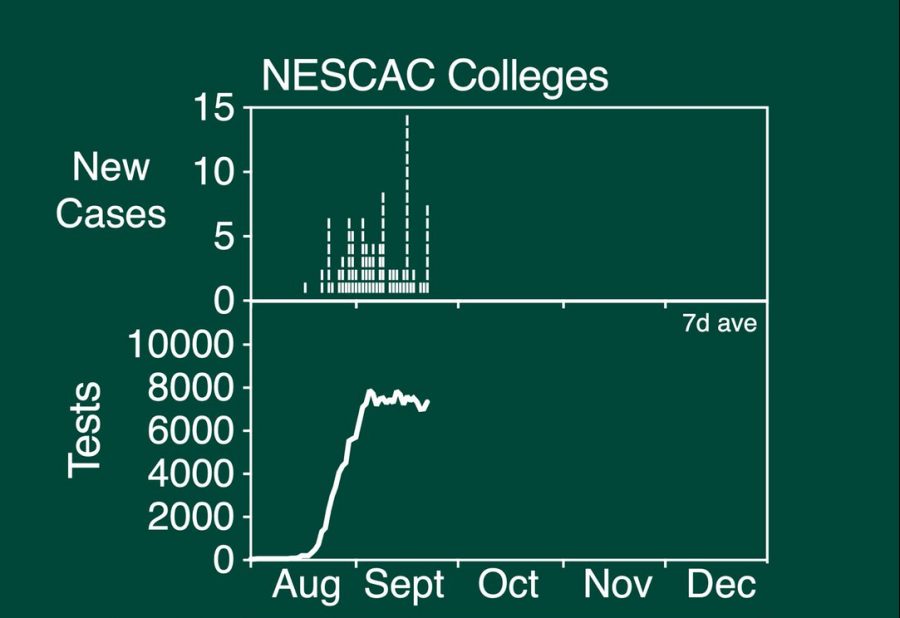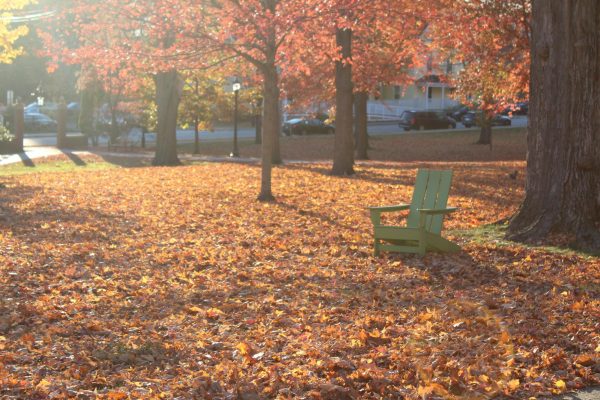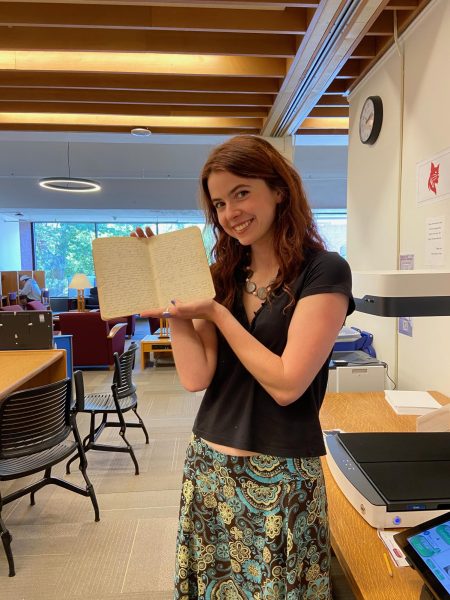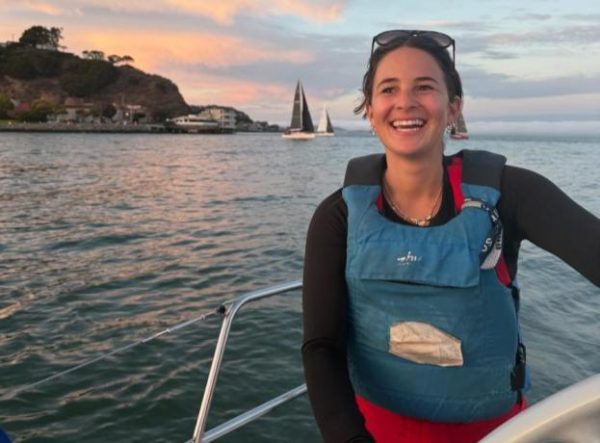Tracking COVID-19 in the NESCAC
Graph from the Sept. 22 update of COVID-19 cases displaying the number of new cases reported and the total daily tests in the NESCAC.
Assistant Professor of Chemistry and Biochemistry Andrew Kennedy began tracking COVID cases throughout the NESCAC with a team of two seniors, Jillian Serrano ‘21 and Wuyue Zhou ‘21, when college campuses reopened this fall. As Bates students began to arrive on campus, Kennedy and his team recorded and posted the numbers of new cases, county cases, and testing volumes across all NESCAC institutions.
“The first goal was to provide a consistent service for parents, students, and employees of the different colleges. But we also had intellectual investment into how this whole experiment in public health would go,” Kennedy said.
https://twitter.com/Prof_AJKennedy/status/1308522336975552513?s=20
The statistical-based research can be easily accessed by anyone through Kennedy’s Twitter page, @Prof_AJKennedy, and their Instagram account, @nescac_covidtracker.

Every day on both the Twitter and Instagram pages, the number of new cases and the total number of cases for each NESCAC school is listed. Additionally, the Twitter page includes graphs comparing new cases, testing volumes, and days with new cases for each college. Kennedy also provides important news updates and commentary if anything significant has occurred that day pertaining to new COVID cases.
Kennedy’s interest in tracking COVID was sparked by conversations with other faculty members and his summer research group of eleven students. “When we spoke with each other, it seemed every conversation was consumed with whether Bates would reopen in-person,” Kennedy stated. “Then in July and August it was whether Bates would remain open for the entire fall”.
Bates includes the capacity of local hospitals and the number of isolation beds as limits to their ability to continue in-person classes. However, Kennedy identifies that community trust is far more important than either of these numbers. Both faculty and students need to be able to ensure their own safety on campus in order for the in-person Bates experience to continue.
“Transparency and accountability seemed necessary for making in-person college possible, so I reached out to two seniors about whether they would be willing to help me track COVID statistics at Bates,” Kennedy said.
The decision was made to also incorporate COVID data from other NESCAC schools into their research. All NESCAC schools brought at least a portion of their students back on campus with similar social distancing policies and rules. They all use the same testing platform, the Broad Institute, which allows for fewer variables within their data collection.
On his Twitter page, Kennedy compared looking at the entire NESCAC conference with similar COVID protocols to a “curveball that spins down the middle of the plate.” As an avid baseball fan, Kennedy explained that he finds that there is nothing more frustrating than watching a pitcher throw a bad pitch, get lucky, and have the commentator call them an ace.
“Everyone is so invested in whether the plans put in place will work to keep us safe that we wanted to assess these plans [and] replicate. The NESCAC seems like a good sample size within our capacity to track,” he said.
Kennedy and his team have also considered statistics from other schools outside of the NESCAC as it is important to see how differences in rules and policies may affect the number of cases. Unfortunately, they are unable to formally track these other institutions due to limited staff.
Each member of the research team must do a significant amount of work each day to compile the information necessary for each report. Kennedy’s main focus is on running the Twitter account and compiling the data collected into graphs to communicate his team’s results. The collection of the data is the responsibility of Serrano and Zhou.
Born and raised in El Paso, Texas, Serrano is a Biology major with a minor in Theater. She is in charge of collecting county data from John Hopkins for each college every day while also running the Instagram account. After downloading a spreadsheet provided by John Hopkins, she copies the number of new cases per 100,000 in each county of the NESCAC schools into their own spreadsheet.
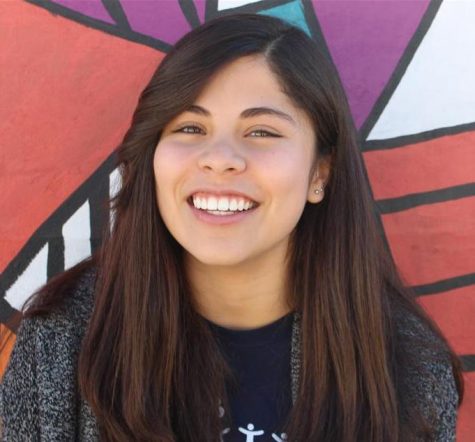
“This is very important work because it allows us to see if increased cases in the counties will cause an increase in positive cases on campus,” Serrano said.
It is far too early within their research process to identify patterns between county cases and outbreaks on campus, but in the future, this will be beneficial to see if county cases have any relationship to on-campus cases.
Serrano’s personal goal for this research is to show others how important a task as small as copying data from a spreadsheet once a day can be. “No job in research is too small, because everything will come together to help educate the public for the greater good,” she said.
Zhou, a Neuroscience and Mathematics double major from Beijing, China, collects and organizes all the data from the different schools. Zhou also spends about an hour a day discussing how schools are reporting their data with Kennedy.
NESCAC schools are not required to post their COVID statistics for the public, but they have been doing so voluntarily. For this reason, each school has its own way of communicating and organizing their results. This poses a challenge for Zhou who must individually find and organize all the data each school puts out.
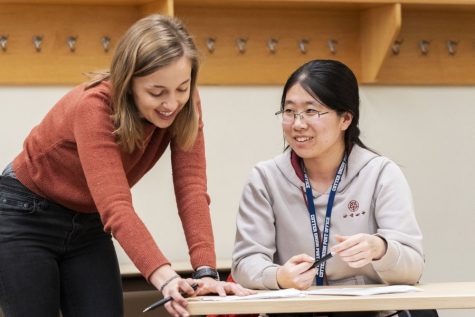
Zhou hopes the hard work will create a reliable database to allow for future analysis of the effectiveness of certain protocols and rules that NESCAC schools have been implementing. “As a result, we want to have a report about conditions in different NESCAC schools, which protocols are helpful and which are not, and some general suggestions about if students should return to campus during the pandemic,” Zhou said.
The data Kennedy and his research team have collected have already allowed them to test the predictions others had about the reopening of NESCAC schools. Before students returned to campus, it was unclear as to whether the colleges could prevent large outbreaks when positive cases were present. Several schools have shown that their policies and rules have been effective at preventing large outbreaks during the move-in period.
According to Kennedy, “that is a big deal because it means there may be measures that college[s] could implement to operate safely while in-person during this pandemic even if COVID shows up on campus.”
Colby College is one particular example that was impressive to Kennedy and his team. There were eight total cases at the time of move-in, and they were able to bring their seven-day average of new cases back down to zero. It was concluded that the various public health measures implemented, as well as extensive testing and quarantine, prevented an outbreak.
“That gives me hope,” Kennedy said. “That doesn’t mean Colby won’t have more cases, they will. But it might not be a foregone conclusion that a single case means continuous transmission for a small college.”
Not only is the data Kennedy and his team are collecting important for public health officials at colleges to be aware of, but students also have the responsibility of following the daily updates. Understanding the effect that collective actions have on a community can influence the individual actions of Bates students. Based on the conclusions made from move-in periods, we know the protocols and rules students in the NESCAC were following during this time prevented a large outbreak and allowed for in-person classes to continue.
Referring to faculty and staff on campus, Kennedy said: “Thousands of people are risking their health for [students’] education and development. We cannot ease your anxiety, but you will never need further proof of your importance.”
Your donation will support the student journalists of Bates College and help us cover our annual website hosting costs.

Elizabeth is a member of the class of 2023 and is from Richmond, Rhode Island. She is a double major in English and chemistry and is also a member of...


